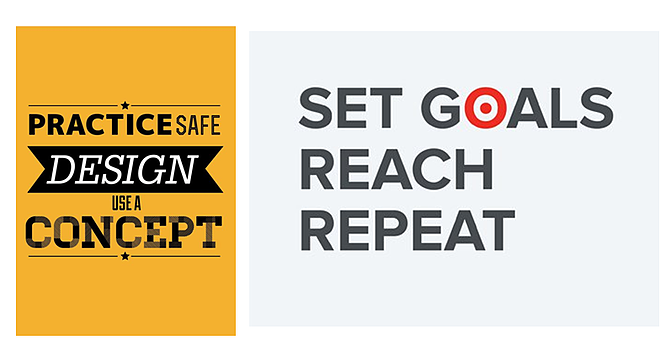As an eLearning designer, you are expected to create courses that are quirky and engaging besides being informative. Normally, this wouldn't be a tall order for a creative individual like you. But what bugs you is that inspiration doesn't strike you on all days. What is even more nerve-wracking is that you are expected to create wow courses from dull and drab content—systems application training, HR policies, health and safety measures, and the like. These are critical knowledge, and you have to ensure the learners remain hooked to your course.
If your creative muse is not around, here are some tips to help you find inspiration.

1) Look for Inspiration in Unlikely Places
Look beyond eLearning courses, look up from your computer screen, get up from your desk, and seek design inspiration in other areas of life. A quirky toy packaging. An advertisement screaming at you from the billboard. The blurb on the book jacket. The layout of a magazine. The visuals in a music video or the storyline of a movie. The innovative and effective interplay of aesthetics and functionality—the hallmark of a great design—is evident everywhere if you keep your eyes open. Check out this Pinterest board we've curated with random ideas to get you thinking in a way that moves you to create something meaningful:

2) Keep a tab on design trends with Quora, RSS feeds, and Twitter.
You will be amazed to know how many creative people are right now sharing their design ideas and insights on the Internet. They showcase their work on their blogs, share design tips on Twitter, talk about theories and trends or answer questions on creativity and inspiration on Quora.
If you are active on Twitter, follow these Twitter feeds or these User Interface designers to keep your creative juices flowing. If you are a regular on the blogosphere, subscribe to the RSS feeds of your favorite designers, so you never miss an update from them.
3) Scour photographs online and offline
Find your inspiration in well-composed photographs that capture the mood of a scene or the emotion of a person. You can also discover and learn quirky ways to represent ideas symbolically from photographs.
Scour photography-sharing websites like Flickr, Pinterest, Instagram, and DeviantArt. Browse magazine and coffee table books and pore over the photographs printed here. Raid your attic or roam through flea markets to look for vintage photographs. Or curate a Pinterest board for your eLearning projects on both related and unrelated subjects. Check out this one:

4) Brainstorm sessions
You can brainstorm alone and capture your ideas on a mind-mapping app. Or you can brainstorm with your peers or other creative individuals to come up with new ways to present old content. Listen to their ideas, present your own, and create novel designs for dull or complex technical content, scenarios, and stories. Be sure plenty of ideas will be generated in these sessions. Jot them down in your Moleskin or use some nifty app like MindNode, Candor, Moodboard, or WordStorm to organize them.
5) Sign up on Dribbble
Dribbble is a social networking platform for designers. And no, the extra b in the name is not a typo. See, you are already hooked. Here you can not only put up your own work and receive valuable feedback from your peers but also take a sneak peek at what other creative individuals are working at. If you want to find inspiration from Dribbble, follow the works of some of the best and the brightest web designers and illustrators in the world who frequent this website.
According to CreativeBloq and Honkiat, here are some designers you can start following:
- Jon Contino
- Bill S Kenney
- Eddie Lobanovkiy
- Mike- Creative Mints
- Megan Fisher
- Stephen Parker
- Claudiu Cioba
6) Study your favorite designers and the designs you love
You have countless ways to keep up with what your favorite designers are up to. Study their works closely and paste photographs or prints of their most famous creations on your mood board. Look closely for patterns that make these designs stand apart from the clutter that abounds the Internet. Be inspired from their bold use of colors that liven up any frame, intriguing typography that becomes an element in the scene, or clean lines that give a minimalist edge to a design. Break every design to learn what works and what doesn't and which elements gel well with one another. Curate ideas, so you are never short of inspiration.
These sites collect websites and projects that use best design practices:
- The Best Designs
- WIG
- The Inspiration Grid
- Design Inspiration
- Niice
7) Remember your motivation to design
Make an effort to remain inspired. Tell yourself that you will always be on the lookout for inspiration even when you are in not in office, chasing deadlines, or have a fastidious client to satisfy. Browse through design resources. Brainstorm on your own. Keep an ideas diary. Mingle with creative people. Be in the midst of Nature. In short, make every effort to be creative and honor your ideas.
And lastly, always remember why you chose to become a designer. Find an inspirational message and paste it at your workplace. Let your passion drive you.
Here Are Some Awesome Motivational Posters For Your Workspace or Office

As an eLearning designer, you are expected to have your head crammed full of creative ideas that you can transfer to the slide in a jiffy. You better don your inspiration hat now, and start stocking up on the ideas! Tell us how do you find design inspiration in the comments below








